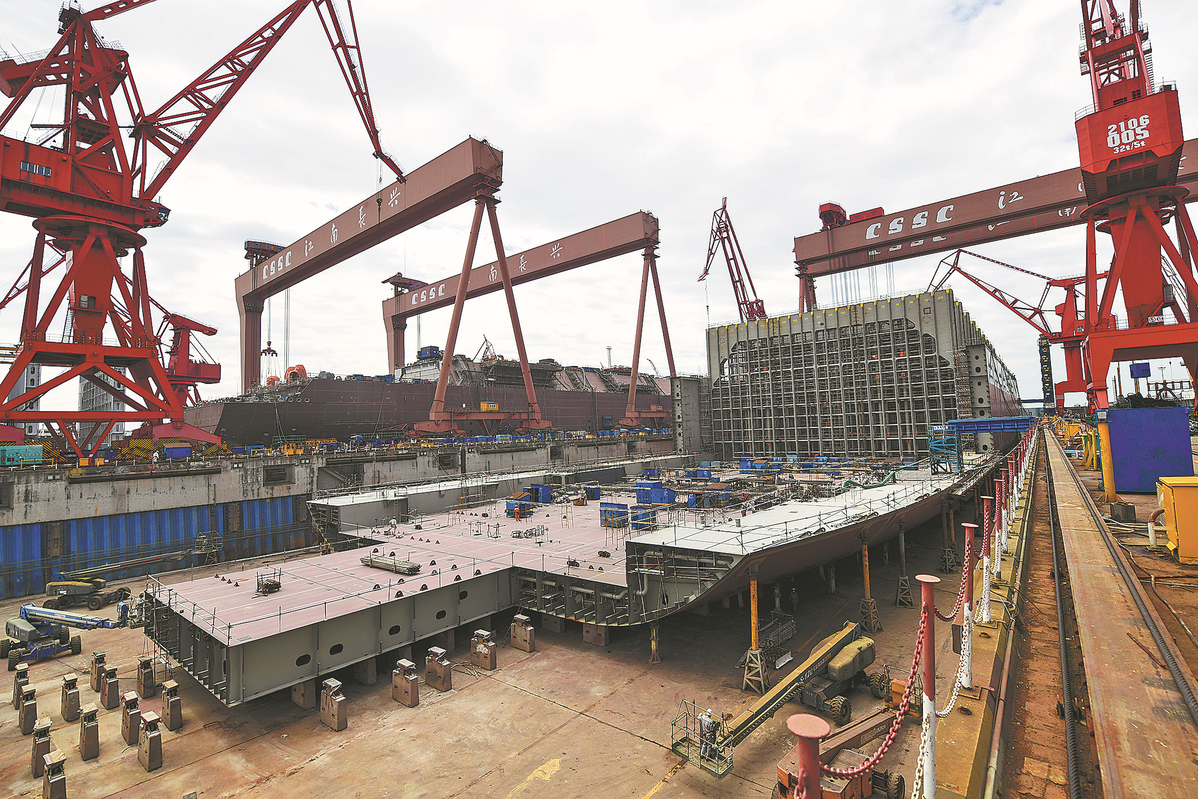Country's shipbuilders chart new waters


Decades of efforts
Hudong-Zhonghua's delivery schedule is full until 2027. However, Song Wei, its chief engineer, said this is not down to luck, but to persistent hard work and a strong determination to overcome difficulties.
Due to this special form of natural gas, shipping it in a liquefied state at a temperature below — 163 C is the most cost-efficient method.
It costs more than 1 billion yuan ($139.8 million) to build a single LNG carrier, equivalent to the cost of constructing two Boeing 737 aircraft.
A 174,000-cubic-meter LNG vessel typically carries about 100,000 metric tons of LNG safely across thousands of kilometers of ocean. Building such specialized cargo carriers requires state-of-the-art manufacturing techniques, as the vessels are made from more than 1.1 million components.
Responding to the central government's call to build domestically-made vessels, Hudong-Zhonghua launched the LNG project in 1998. It decided to introduce patented technology for a liquefied cargo containment system from GTT of France.
In March 2002, the shipyard won the bid for the LNG project in Guangdong province to construct two 147,000-cu-m carriers, with the option of building an additional vessel.
Construction of China's first home-built LNG carrier started at Hudong-Zhonghua in December 2004, and the vessel was delivered in April 2008.
"By the time our first ship (a first-generation vessel) was delivered in 2008, a second-generation LNG carrier had been built by a South Korean shipyard," Song said. As high-value-added vessels, LNG carriers have been upgraded from generation to generation due to constant market demand for higher efficiency.
Following a requirement to load more LNG with less consumption of energy, in 2007, a team of about 30 led by Song started work on independently researching and developing the second-generation Changjian series. Hudong-Zhonghua received its first order for this model in 2010, and it went into operation in January 2015.
"This was a key turning point and proof that Hudong-Zhonghua was capable of developing and building large LNG ships on its own," Song said. "However, at the time, global LNG carriers were entering the third-generation phase."
The shipyard kept narrowing the gap with its international peers by introducing the third-generation Chang'an series and fourth-generation Changxing series, receiving the first orders in 2012 and 2017, respectively.
"Facing fierce competition from top shipbuilders in South Korea, our annual new orders have maintained at between 6 percent and 8 percent of the global total for the past few years. We have continued to sharpen our development capability to win increased international recognition," Song said.
In December 2021, Hudong-Zhonghua unveiled a fifth-generation 174,000-cu-m LNG vessel in its Changheng series, and received 34 orders for these ships last year. Its global market share rose from less than 7 percent in 2021 to 21.8 percent last year.
Compared with the previous generation, the Changheng series reduces more than 10 tons of carbon emissions on a daily basis. In addition, the shipbuilder said the new model can carry 800 cu m more LNG than the previous generation.
























